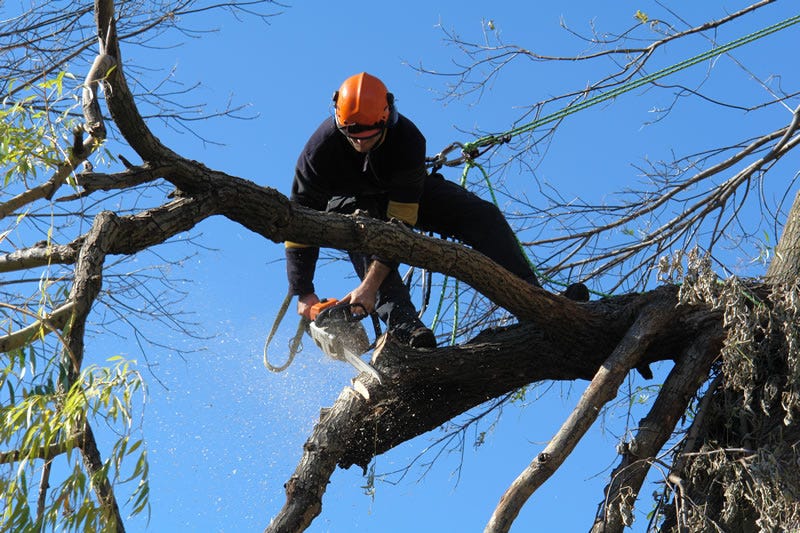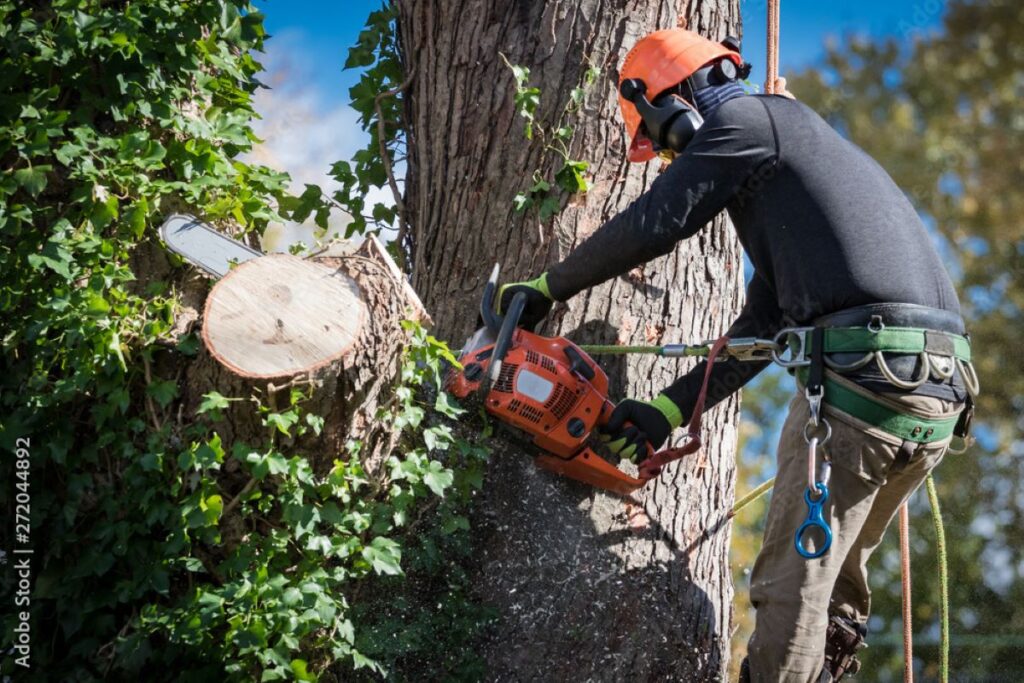Tree removal can be a daunting task for homeowners, especially when it involves navigating local regulations and understanding the reasons behind tree removal policies. In the Hills District, the council has specific guidelines that homeowners must adhere to when considering the removal of trees on their property. This article aims to provide a comprehensive overview of what homeowners need to know about tree removal in the Hills Council area.
Understanding the Importance of Trees
Trees play a vital role in the ecosystem, providing numerous benefits to both the environment and the community. They improve air quality, offer shade, and enhance the aesthetic appeal of neighbourhoods. Additionally, trees can increase property values and provide habitats for wildlife.
However, there are instances when council tree removal becomes necessary. Trees may pose risks to safety, create structural issues, or suffer from disease. Understanding the balance between preserving trees and ensuring safety is essential for homeowners.
Environmental Benefits
The environmental advantages of trees cannot be overstated. They absorb carbon dioxide, produce oxygen, and help to regulate temperatures. In urban areas, trees can mitigate the heat island effect, making communities more comfortable during hot weather.
Moreover, trees contribute to biodiversity by providing habitats for various species. Protecting and managing tree populations is crucial for maintaining ecological balance. The presence of trees can also support local pollinators, such as bees and butterflies, which are essential for the pollination of many crops and wild plants. In this way, trees not only enrich the environment but also play a significant role in food production and agricultural sustainability.
Risks Associated with Trees
Despite their many benefits, trees can also pose risks. Overgrown branches may threaten power lines, while unstable trees can fall during storms, causing injury or property damage. Additionally, certain tree species may be prone to diseases that can spread to other plants.
Homeowners must assess the condition of trees on their property regularly. If a tree shows signs of decay or instability, it may be time to consult with professionals about removal. Furthermore, it is essential to consider the potential impact of invasive species, which can outcompete native trees and disrupt local ecosystems. By staying informed and proactive, homeowners can help ensure that their trees remain healthy and contribute positively to their environment.
Hills Council Regulations on Tree Removal
The Hills Council has established regulations to manage tree removal effectively. These guidelines are in place to ensure that the community’s green spaces are preserved while also addressing safety concerns. Understanding these regulations is essential for homeowners contemplating tree removal.
Tree Preservation Orders
In many cases, trees are protected under Tree Preservation Orders (TPOs). These orders are designed to safeguard specific trees or groups of trees that are considered significant to the local environment. Homeowners must check whether a tree is protected before proceeding with any removal plans.
Removing a tree under a TPO without the proper permissions can result in hefty fines and legal repercussions. Therefore, it is crucial to consult the council’s regulations or seek advice from a qualified arborist. TPOs not only protect individual trees but can also cover entire woodlands, ensuring that vital habitats for local wildlife remain intact. The presence of these trees often contributes to the overall aesthetic value of the area, enhancing property values and providing shade and shelter for various species.
Applying for Permission
If a tree is protected or if the council requires permission for its removal, homeowners must submit an application. This process typically involves providing details about the tree, the reasons for removal, and any supporting evidence, such as photographs or reports from tree specialists.
The council will assess the application, considering factors such as the tree’s health, its significance to the environment, and the potential impact of its removal. Homeowners should be prepared for a waiting period, as the council may take time to make a decision. During this time, it is advisable to explore alternative solutions, such as pruning or relocating the tree, which may mitigate the need for removal altogether. Engaging with local community groups or environmental organisations can also provide valuable insights and support, as many residents are passionate about preserving the natural landscape and may have suggestions on how to address specific concerns without resorting to tree removal.
Steps for Safe Tree Removal
When tree removal is deemed necessary and approved by the council, homeowners should take specific steps to ensure the process is carried out safely and efficiently. Engaging professionals is often the best approach to minimise risks and complications.

Hiring Professional Arborists
Engaging a qualified arborist is crucial for safe tree removal. These professionals have the expertise and equipment needed to assess the tree’s condition and carry out the removal process effectively. They can also provide guidance on the best practices for tree care and replacement.
When hiring an arborist, homeowners should check their qualifications, experience, and reviews from previous clients. It is also advisable to obtain multiple quotes to ensure a fair price.
Preparing for the Removal
Before the removal process begins, homeowners should prepare the area around the tree. This may involve clearing obstacles, such as furniture, vehicles, or garden decorations, to create a safe working environment.
Additionally, homeowners should inform neighbours about the planned removal, especially if the tree is large or if the removal process may cause noise or disruption. Communication can help to maintain good relationships within the community.
Post-Removal Considerations
Once the tree has been removed, there are several considerations for homeowners to keep in mind. Properly managing the aftermath of tree removal is essential to ensure the property remains safe and aesthetically pleasing.
Stump Removal and Site Restoration
After a tree is removed, the stump may be left behind, which can pose a tripping hazard and affect the landscape’s appearance. Homeowners have the option to remove the stump completely or grind it down to ground level. Stump grinding is often preferred as it is less invasive and allows for easier site restoration.
Following stump removal, homeowners should consider replanting to maintain the ecological balance and enhance the landscape. Selecting the right tree species that are suitable for the local environment is essential for successful replanting.
Maintaining the Landscape
With the removal of a tree, the surrounding landscape may require adjustments. Homeowners can take this opportunity to enhance their gardens by planting new trees, shrubs, or flowers. This not only improves the aesthetic appeal but also contributes positively to the environment.
Regular maintenance, such as watering and pruning, will ensure that new plants thrive and that the garden remains healthy and vibrant.
Community Resources and Support
The Hills Council offers various resources and support for homeowners regarding tree management and removal. Understanding these resources can help homeowners navigate the complexities of tree removal and care.
Council Workshops and Information Sessions
The council frequently hosts workshops and information sessions aimed at educating residents about tree care, preservation, and the regulations surrounding tree removal. Attending these sessions can provide valuable insights and equip homeowners with the knowledge needed to make informed decisions.
Homeowners are encouraged to check the council’s website or contact their offices for information on upcoming events.

Consultation Services
The Hills Council also offers consultation services for residents who have questions or concerns about tree management. Homeowners can reach out to the council for advice on specific situations, including tree health assessments and removal processes.
Utilising these resources can help homeowners feel more confident in their decisions regarding tree removal and care.
Conclusion
Tree removal in the Hills District requires careful consideration and adherence to local regulations. Homeowners must understand the importance of trees, the risks they may pose, and the necessary steps for safe removal. By engaging professionals and utilising community resources, homeowners can navigate the tree removal process effectively.
Ultimately, maintaining a balance between safety and environmental preservation is key. Homeowners are encouraged to stay informed and proactive in managing the trees on their properties, ensuring a healthy and beautiful landscape for years to come.
Related : Get Expert Tree Pruning in Sydney to Keep Your Trees Healthy

